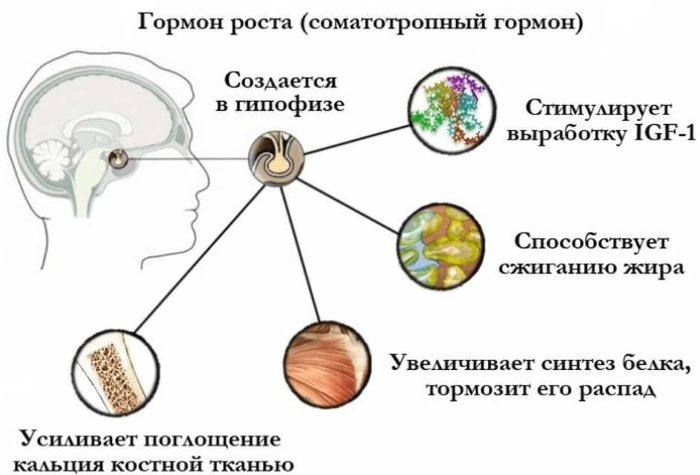A person's working capacity and quality of life are markedly reduced with pain in the back or joints. Pain Relief Pills help to relieve acute pain before going to the doctor, but taking them on an ongoing basis is dangerous with complications and the development of side effects.
Record content:
- 1 Classification of pain relievers for pain in the back, muscles, legs
- 2 Narcotic drugs
- 3 Non-narcotic drugs
- 4 Non-steroidal anti-inflammatory
- 5 Muscle relaxants
- 6 Chondroprotectors
- 7 Analgesics
- 8 Corticosteroids
- 9 List of pills for back pain of the latest generation
- 10 Causes of back pain and the names of drugs to combat them
-
11 Pain relievers in injections
- 11.1 Meloxicam
- 11.2 Ketoprofen
- 11.3 Diclofenac
- 11.4 Lornoxicam
- 11.5 Tenoxicam
-
12 B vitamins for back pain
- 12.1 Milgamma
- 12.2 Neurobion
- 13 Precautions for taking pain medications
- 14 Painkiller Videos
Classification of pain relievers for pain in the back, muscles, legs
Modern medicine can offer a wide range of pain relievers for oral and local use:
| Classification | Group representatives | General action |
| Non-narcotic group of drugs | ||
| Non-steroidal anti-inflammatory | Ortofen, Diclofen, Voltaren, Veral | Elimination of pain in joints and back, fight against inflammatory processes, antipyretic effect |
| Analgesics | analgin, paracetamol, baralgin | |
| Neurotropic analgesics | Cyanocobalamin, Milgamma, Trigamma | Establishing the patency of nerve impulses in the muscles and stimulating metabolic processes, eliminating muscle pain. |
| Narcotic group of drugs | ||
| weak drugs | Tramadol, Codeine | Combating pain of varying intensity in the back, joints, muscles |
| strong drugs | Morphine, Methandone, Hydromorphone | |
| combined | combining several weak opioids | |
| Chondroprotectors | ||
| Hodroxide, Artrocin | Contributes to the protection of the cartilage tissue of the joints, their restoration | |
| Corticosteroids | ||
| Prednisolone, Dexamethasone | Prevention of destruction of cartilage tissue, reduction of pain by preventing inflammation | |
| Topical products | ||
| Pain relievers and anti-inflammatory | Dolobene-gel, Kapsikam, Finalgon | Used to suppress pain in the lower back, joints, cervical spine |
| Contains natural ingredients | balm Dikul, creams "Shungit", "Sophia", preparations with bee venom | Relaxing, pain relieving, warming agents |
In case of ineffectiveness of drugs for oral and topical administration, injections are used. For example, novocaine blockade in the place of intense pain with slight muscle stretching. In more difficult cases, epidural anesthesia is used.
Narcotic drugs
Pain-relieving pills for back pain, containing narcotic components, are prescribed for people with an exacerbated or chronic form of diseases of the musculoskeletal system. Only a doctor can prescribe treatment with such agents, based on the patient's history and the intensity of pain.
The drug group includes:
-
Tramadol. It is prescribed for moderate and severe pain to persons after 14 years of age, both in injections (intramuscularly, subcutaneously, intravenously) - no more than 400 mg per day, and in tablets - no more than 8 tab. per day. With side effects, there is increased sweating, dizziness, nausea, weakness. In more serious cases, an inadequate reaction of the nervous system, blurred consciousness, disruption of the musculoskeletal system. In case of an overdose, it is possible to suppress respiratory reflexes, convulsions, coma. The drug is contraindicated for people with individual intolerance, who are in the stage of alcohol intoxication, for children under 14 years of age.
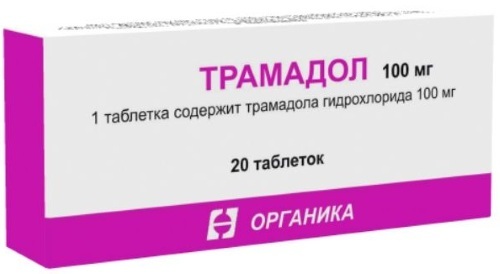
- Codeine relieves moderate to severe pain. It is allowed for adults (the daily rate is not more than 120 mg fractionally) and for children from 2 years of age - 0.5 mg per 1 kg of body weight 5 rubles / day. Side effects are expressed by constipation, drowsiness, and causeless fatigue. Long-term use can be addictive. Contraindications: hypersensitivity, alcohol dependence, depression, brain injury, pregnancy, breastfeeding.
- Morphine. The dosage is determined by the attending physician based on the patient's health indicators. The drug is administered intramuscularly, intravenously. It is contraindicated in patients with depression of the central nervous system, closed craniocerebral trauma, pulmonary and heart failure, intestinal inflammation, predisposition to epileptic seizures and with alcohol dependencies.
- Methadone - a strong narcotic drug. The average daily dose is 15 to 40 mg. It is not recommended for patients with individual intolerance, problems with the respiratory system, during pregnancy and breastfeeding. When taking the drug, constipation, excessive sweating, drowsiness, and central nervous system dysfunction may occur.
Non-narcotic drugs
Non-narcotic drugs are very different in their properties from drugs containing morphine. In terms of the strength of the analgesic effect, they cannot compete with drug addicts and are more often used to localize pain in inflammatory processes (neuralgia, arthritis, myositis).
These medicines:
- do not affect the central nervous system;
- do not cause unreasonable euphoria;
- do not provoke a state of drowsiness;
- do not depress the respiratory system;
- can serve to lower the temperature;
- not addictive.
Non-steroidal anti-inflammatory
Pain relievers for pain in the back, joints and tissues belonging to the non-steroidal group are non-hormonal agents.
They are mainly prescribed for:
- inflammation of the joints - rheumatism, arthritis;
- pain syndrome after an injury;
- diseases of a degenerative nature: osteochondrosis, osteoarthritis, causing deformation of bones and joints;
- neuralgia;
- gout attacks;
- bursitis;
- pain after surgery.
There are general contraindications for the entire group of non-steroidal anti-inflammatory drugs:
- before a planned pregnancy and during its period;
- during breastfeeding;
- with a stomach ulcer;
- with internal bleeding;
- malfunctions of the gastrointestinal tract;
- with asthmatic phenomena;
- with ischemia;
- preschool and primary school age;
- individual intolerance;
- severe liver failure.
Non-steroidal drugs include drugs in tablets such as:
- Diclofenac it is used as an analgesic, anti-inflammatory and antipyretic agent. Method of use: 1 tab. up to 3 times a day for 30 minutes. before meals. Extended-release tablets (100 mg) are taken 1 r. / Day. In pharmacies, Diclofenac is sold without a prescription, but for those suffering from diabetes mellitus, anemia and hypertension, elderly patients, a doctor's consultation is necessary.
- Ketoprofen has properties similar to Diclofenac. The dosage is set individually, but not more than 300 mg per day, 2-3 times a day. It is contraindicated in case of peptic ulcer disease, pregnancy and children under 15 years of age. It can cause headaches, drowsiness, therefore it is not recommended for drivers and people performing work associated with increased attention.
-
Movalis taken with meals. The maximum dose is 15 mg per day. Not recommended for children under 15 years old, people over 65 years old, can cause mood swings, drowsiness, allergic reactions, rarely anaphylactic shock.

- Nise taken after meals with plenty of liquid. For children after 12 years of age and adults, the recommended dose per day is not more than 200 mg. Adverse reactions do not appear often, it is allowed for use by pregnant women.
Muscle relaxants
Muscle relaxants are drugs that help relax the striated muscles (skeletal muscles) and relieve painful symptoms.
This group includes:
- Mebedrol It is used to reduce muscle tone in case of problems with the musculoskeletal system, spastic paresis. It is taken as prescribed by a doctor - 2-4 times a day for 0.05 g, but in total no more than 0.20 g. Contraindicated in patients with glaucoma. May cause heart palpitations, dry mouth, and nausea.
- Sirdalud relieves excessive muscle tension in chronic spastic syndromes of the spinal muscles. The drug is not recommended to be used uncontrollably and without a doctor's prescription. Particular care is needed for elderly patients and children.
-
Chlorzoxazone acts on the spinal cord, partially suppressing reflexes and reducing muscle spasms. It is taken 3 times a day - adults - 250 mg in 1 dose, children - 125 mg. The drug should only be used as directed by a physician. Taking Chlorzoxazone affects the ability to drive vehicles and mechanisms.
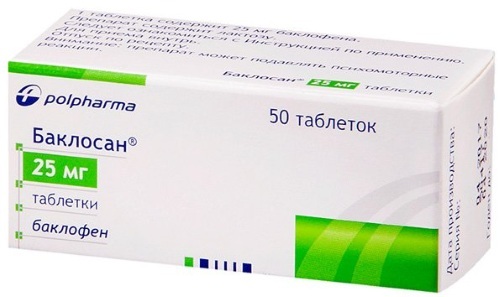
Baclofen (Baclosan) is a muscle relaxant for relieving muscle spasms and
GABA-B agonist - Baclofen helps to relieve muscle spasms, has a slight analgesic effect. The need for use and dosage is determined by the doctor. There are side effects: lowering blood pressure, dizziness, nausea.
Chondroprotectors
Pain relievers for back and joint pain, which have the ability to initiate the regeneration of cartilage tissue, are called chondroprotectors.
Popular are:
- Kondronova (in capsules) is used to protect cartilage tissue, promote its growth and repair, thereby reducing painful discomfort in the intervertebral regions and joints. It is contraindicated in persons with hypersensitivity to seafood, pregnant and breastfeeding. The adult dose is 2 drops. 2-3 rubles / day, treatment course - at least 2 months. Side effects can manifest itself in disorders of the gastrointestinal tract and sleep, skin rash, dizziness.
-
Arthra promotes the treatment of osteoarthritis of the joints and spinal column. Accepted according to the scheme: 3 weeks, 1 tab. 2 rubles / day, and then 4-6 months, 1 tab. / Day. An allergic reaction is possible, a violation in the functioning of the gastrointestinal tract.
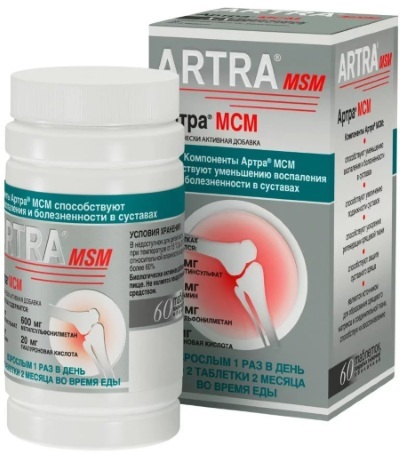
- Glucosamine sulfate It is prescribed for osteochondrosis, perioarthritis of the scapular-shoulder zone, diseases of the peripheral joints. The daily dose when taken is 1800 mg (3 r. / Day, 600 mg). Not recommended for children under 12 years of age, during pregnancy and lactation. May cause itching and skin rashes, constipation, or flatulence.
- Chondroxide is indicated for the treatment of degenerative diseases of the spine and joints, for the prevention of arthritis and arthrosis. The drug is taken in 2 tabs. (0.5 g each) 2 rubles / day for six months. Most often, side effects from it are not observed.
Analgesics
For pain in various areas of the back and extremities, pain pills from the non-narcotic group are often used analgesics that reduce pain, fever, inflammation and are non-addictive and serious side effects symptoms.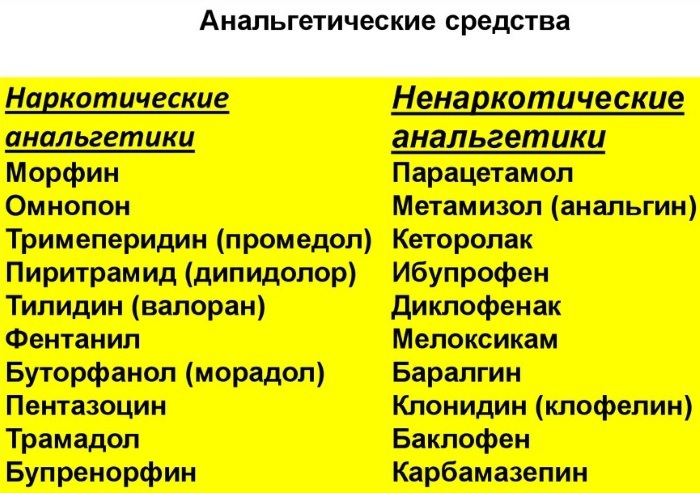
Most often used:
- Citramon relieves the symptoms of neuralgia, and pain syndromes of various nature. It has a large number of contraindications. The usual dosage regimen: 1-2 tab. every 4 hours, no more than 8 tablets per day, duration of admission - 6-8 days.
- Paracetamol relieves pain of mild to moderate intensity with neuralgia, lowers fever. It is not recommended to take it for lactation, chronic alcoholism, impaired kidney and liver function. Accepted after 1 hour. after meals, 3-4 times for 0.35 - 0.5 g, but not more than 4 g per day. The duration of therapy should be no more than a week.
- Analgin it is used as an analgesic and antipyretic agent of moderate effect. Persons suffering from blood diseases, asthma and bronchospasm. Pregnant women and women during lactation are advised to consult a doctor first. Dose for adults - after meals 1 tab. 3 rubles / day, for children - 5-7 mg / kg of weight 3 rubles / day for no more than 3 days in a row.
- Baralgin relieves moderate pain. Persons over 15 years old are recommended to take the drug in 1-2 tabs. 3 rubles / day, children 12-14 years old, 1 tab. 3 rubles / day, for younger age groups - 0.5 tab. There may be side reactions: rash, drowsiness, impaired renal function.
Corticosteroids
These drugs are a replacement for the hormones of the human body, are used in medicine in critical cases, with severe pain, therefore they are sold in pharmacies exclusively with a prescription and are taken as directed doctor.
Corticosteroids start working immediately, and the result is in the shortest possible time. The problem lies in their short-term action and addiction.
This group includes:
- Dexamethasone is used as an antirheumatic agent.

- Methylprednisalone relieves inflammation and pain in the lower back, cervical spine, joints.
- Medrol is prescribed for joint diseases, eliminates inflammation and swelling.
- Dexazon is prescribed for rheumatoid and other arthritis, rheumatism.
List of pills for back pain of the latest generation
Pain relievers for back pain are being improved thanks to modern technology and scientific development.
Modern drugs include:
- Ketoprofen works for a long time, fights moderate to severe pain.
- Ketorol is a potent drug that requires an accurate diagnosis when used.
- Diclofenac relieves back pain, but works within a few hours after ingestion. Does not cause serious side effects.

- Medocalm relieves muscle spasms. It is used in the course of treatment.
- Vicodin contains a minimum amount of narcotic substances. It is prescribed by a doctor for severe pain. It is effective, but has a negative effect on the central nervous system.
Causes of back pain and the names of drugs to combat them
The existing causes of back pain can be grouped into several groups:
- Short-term, resulting from mechanical stress or incorrect position of the spine:
- awkward, careless movement when bending or turning back of the upper body;
- improper transfer of weights (torn back);
- violation of posture when sitting or walking for a long time;
- stretching muscles when playing sports;
- uncomfortable posture during a night's sleep.
Treatment can be limited to 2-3 days with topical use of drugs such as Dolobene-gel and oral analgesics: Diclofenac or Nise.
- Physiological and psychological reasons:
- excess body weight, which increases the load on the spine;
- the period of pregnancy, when the center of gravity of the body shifts;
- long-term smoking habit causing changes in bones and tissues;
- constant stress provoking prolonged muscle contractions;
- taking medications that reduce bone density.
Treatment requires a longer and more comprehensive approach. Muscle relaxants are prescribed (for example, Mebedrol, Baclofen), warming or cooling ointments (for example, Shungin, Finalgon), Ketoprofen, chondroprotectors (Artra, Chondroxide), as well as additional drugs for indications.
- Pain syndromes caused by diseases:
- osteochondrosis;
- intervertebral hernia;
- arthritis;
- pyelonephritis with radiating pain in the lower back.
The complex treatment includes muscle relaxants, corticosteroids (such as Methylprednisalone), non-steroidal drugs (for example, Nise, Movalis), in some cases, Vicodin.
- Directly diseases of the bone and soft tissues of the spine (bone cancer, tuberculosis of the spine, dissection of the aortic walls). The treatment is carried out in many ways, according to the decision of doctors with the use of narcotic drugs (Codeine, Metandon).
Pain relievers in injections
Intramuscular administration of drugs is considered more effective due to the fact that they are delivered directly in the tissue and are safe for gastrointestinal diseases, hepatic or renal ulcers failure.
The main reason why injectable drugs cannot be taken is hypersensitivity to a certain component.
Injections include:
- non-steroidal anti-inflammatory drugs;
- B vitamins;
- narcotic drugs;
- novocaine blockade.
Meloxicam
The medicine belongs to NSAIDs, is available in the form of tablets and injections. It is used to combat pain symptoms during inflammation and joint degeneration (osteoarthritis, arthritis). The course of therapy is 2-3 days, the dosage is up to 15 mg per day. It is contraindicated in children under 15 years old, people over 65 years old, pregnant women suffering from asthma, renal, heart failure in severe forms.
Ketoprofen
This is a representative of the NSAID group, available in the form of tablets and injections for intramuscular and intravenous administration. It is prescribed for symptomatic treatment. 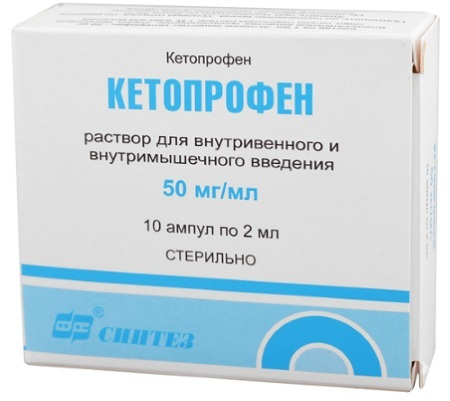 Care is needed in prescribing medication for anemia, alcoholism, sepsis, blood diseases, asthma, heart problems. He is appointed to receive 1-2 rubles / day. The course of therapy is 2-3 days.
Care is needed in prescribing medication for anemia, alcoholism, sepsis, blood diseases, asthma, heart problems. He is appointed to receive 1-2 rubles / day. The course of therapy is 2-3 days.
Diclofenac
It is a non-steroidal drug in tablets or ampoules, used for rheumatism, arthritis, lumbago and a number of inflammation of the musculoskeletal system. The maximum dose is 100 mg per day. The duration of therapy is 2-5 days, with a longer period, regular examination of blood, feces, liver is necessary.
Lornoxicam
The medicine belongs to NSAIDs. It is used in symptomatic therapy, including for arthritis, systemic lupus erythematosus with joint pain, sciatica. The drug is not recommended for persons under 18 and over 65, as well as for patients with a number of diseases of the gastrointestinal tract, cardiovascular and respiratory systems.
The initial dosage is 8 mg, if the anesthetic effect is not achieved, the same amount is prescribed. The maximum amount of the drug per day is no more than 16 mg.
Tenoxicam
It is a non-steroidal drug with properties typical of its group. When using it, it is necessary to control the state of the liver, kidneys, blood. The permissible dosage is no more than 20 mg per day. The course of therapy, according to the doctor's recommendation, is 1-2 weeks.
B vitamins for back pain
For the relief of acute pain and the normalization of reflex activity, neurotropic combined drugs, including B vitamins, are successfully used1, IN6 and in12that affect the work of the central nervous system, used as analgesics.
The popularity of these funds is explained by the minimum side effects, the possibility of treatment replace some drugs of different groups with one representative of the vitamin group, cheaper treatment.
Milgamma
The neurotropic agent is successfully used in monotherapy and in conjunction with Diclofenac for the treatment of lower back pain.  It is prescribed in combination with other drugs for neuralgia, disruption of the nervous system, radiculitis. Milgamma is produced in ampoules of 2 ml, injected i / m 1 r. / Day. The course of therapy is a week.
It is prescribed in combination with other drugs for neuralgia, disruption of the nervous system, radiculitis. Milgamma is produced in ampoules of 2 ml, injected i / m 1 r. / Day. The course of therapy is a week.
Neurobion
Neurobion is produced in 2 forms: tablets and liquid for intramuscular injection. It is used in the complex treatment of neuralgia, the elimination of pain in diseases of the spine.
He is prescribed 3 mg 1 r. / Day until the desired result is obtained, then, for preventive purposes - 2 r. / Week for 21 days. It is not recommended for persons with hypersensitivity to one of the components of the drug, under 18 years of age, during pregnancy.
Precautions for taking pain medications
For the treatment to be successful, you must adhere to the following rules:
- You cannot self-medicate.
- It is not recommended to independently increase the amount of analgesics taken.
- Do not drink alcohol while taking opioids and other pain relievers.
- Opioid treatment should not be discontinued abruptly. Under the supervision of a physician, the dose should be reduced gradually.
- Opioid medications should be kept out of reach of children.
- If you experience side effects while taking pain relievers, you need to consult a doctor.
In case of pain in the back and other parts of the body, pain pills, ointments, injections, gels will come to the rescue. All of them will help you gain freedom of movement, but only if used correctly.
Painkiller Videos
Brief characteristics of painkillers:

